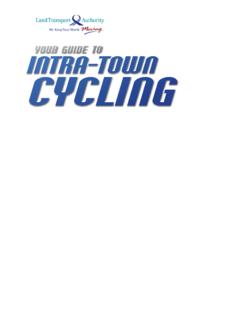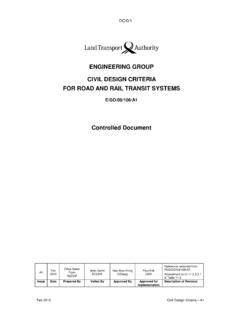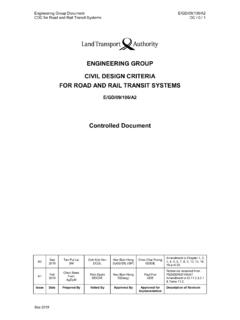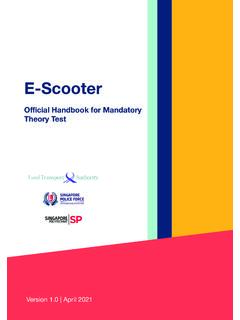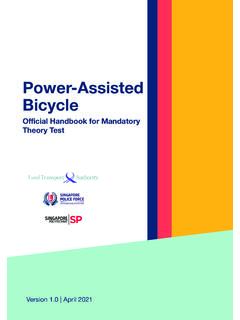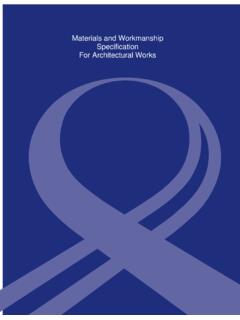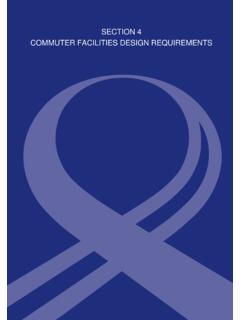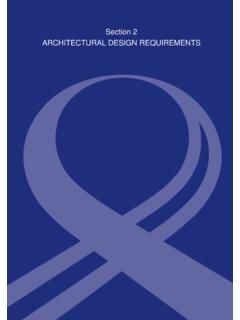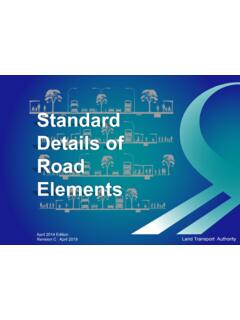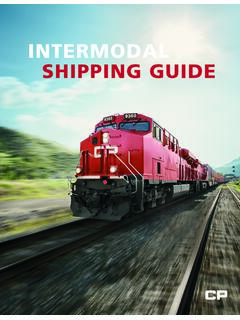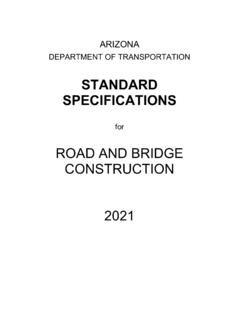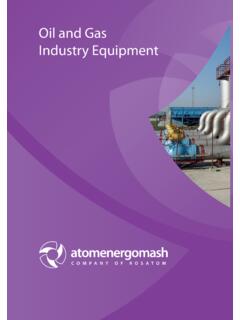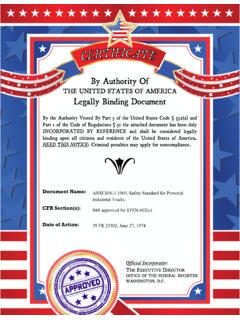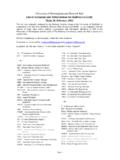Transcription of Code of Practice for Traffic Control at Work Zone
1 Code of Practice for Traffic Control at Work Zone July 2019 Edition 1 Code of Practice for Traffic Control at Work Zone Code of Practice for Traffic Control at Work Zone July 2019 Edition The Code of Practice (COP) for Traffic Control at Work Zone was published by Land Transport Authority (LTA), Singapore, to provide those involved in construction activities within the public street a comprehensive guide to temporary Traffic Control . The COP explains the fundamental principles for the provision of good Traffic Control and also gives a detailed guide on planning and designing the Traffic Control plan for the safety of road users. This July 2019 Edition comes into effect on 1 July 2019 and supersedes all previous editions. Clarifications on any aspect of this COP may be made with the Road Asset Regulation & Licensing Division of LTA, Singapore. Origin and Development of Code of Practice for Traffic Control at Work Zone Conflicts between Traffic and works on or next to the road are inevitable.
2 It is important to reduce such conflicts to optimise work efficiency and Traffic safety, and to minimise Traffic congestion, delay and inconvenience to road users. The first COP for Temporary Traffic Control was published in June 1998 and dealt with the specific work area in the carriageway and its corresponding Traffic Control arrangement. This proved to be useful in providing contractors with typical temporary Traffic Control arrangement but inadequate when major temporary Traffic schemes are involved. In June 2001, the COP for Traffic Control at Work Zone was published to provide those involved in all forms of construction activities within the road reserve with a comprehensive guide to temporary Traffic Control . In June 2006, general improvements were made to COP for Traffic Control at Work Zone to enhance its user-friendliness. Following that, periodically updates were also made to reflect any change in requirements such as new Traffic Control devices that have been introduced into the industry.
3 Given the increase in construction activities within the road reserve due to rapid developments and more demands for bigger capacity utility services in recent years, a comprehensive review of the COP was necessary to ensure that it continues to remain user-friendly and relevant from the planning to operations of temporary Traffic Control in a work zone. Under this July 2019 Edition, the content had been condensed from 5 Chapters into 4 Chapters with more pictorials for users to better appreciate the requirements of temporary Traffic Control at work zone to enhance overall safety of working on public streets. Other revisions include a flowchart to guide users on the necessary checks to be carried out and physical improvements to ensure safe deployment of Truck Mounted Attenuator (TMA) at work zones. 2 Code of Practice for Traffic Control at Work Zone Although the COP does not cover every possible situation, the emphasis is nevertheless on safety first under any situation.
4 The safety philosophy for carrying out works on public streets is aptly epitomised by the maxim: It is the works that should adapt to the Traffic conditions whenever and wherever possible and not for the Traffic to adapt to the convenience of the works! It has been assumed that the execution of the provisions in this Code is entrusted to suitably qualified and experienced people, for whose guidance it was prepared. Always consult a qualified person about the provision of temporary Traffic Control . In situations where the qualified person needs clarifications, he shall seek advice from the Authority. Compliance with this COP does not of itself confer immunity from legal obligations. This Code of Practice on Traffic Control at Work Zone is issued by the Land Transport Authority under Regulation 12 of the Street Works (Works On Public Streets) Regulations 1995.
5 It deals with the standards, procedures and other requirements pertaining in particular to paragraph 2(a) of Regulation 12 for carrying out works on public streets. LAND TRANSPORT AUTHORITY 3 Code of Practice for Traffic Control at Work Zone Contents Chapter 1 Introduction .. 5 1 1 5 1 2 Objectives .. 5 1 3 Application .. 5 1 4 Improvement Process .. 6 1 5 Definitions .. 6 Chapter 2 Fundamental Principles of Traffic Control .. 8 2 1 8 2 2 Safe Road Environment .. 8 2 3 Minimum Risk .. 8 2 4 Planning Ahead .. 9 2 5 Good Traffic Control Plan .. 9 2 6 Effective Traffic Control Devices .. 9 2 7 Trained Personnel .. 9 2 8 Workers Safety .. 9 2 9 Safety of Pedestrian Cyclist and Personal Mobility Device (PMD) Users .. 10 2 10 Vehicles and Equipment Safety .. 10 2 11 Road Surface Condition .. 10 Chapter 3 Planning, Design and Implementation of Traffic Control Plan.
6 11 3 1 11 3 2 Phases of Traffic Control .. 11 3 3 Planning for Traffic Control .. 11 3 4 Design Considerations .. 13 3 5 Design Traffic Control Plan .. 13 3 6 Drawings .. 17 3 7 Implementation, Operation & Maintenance and Close out .. 21 3 8 Implementation Procedure .. 22 3 9 Operation Procedure .. 22 3 10 Closing out Procedure .. 23 3 11 Safe Operation Procedure for Truck Mounted Attenuator (TMA) .. 23 Chapter 4 Design and Application of Traffic Control 24 4 1 24 4 2 Temporary Advance Warning Signs .. 24 4 3 Information Signs .. 24 4 4 Lateral Shift Markers (LSM) .. 24 4 5 Pavement (road) Marking .. 25 4 6 Sign Mounting & Covering .. 25 4 7 Delineation and Channelling Devices .. 27 4 8 Traffic Cones .. 27 4 9 Temporary Kerbs .. 28 4 10 Water Filled Barricades .. 28 4 11 Traffic Cylinders/Vertical Panels .. 29 4 12 Road Safety Barriers .. 32 4 13 Water filled Safety Barriers.
7 36 4 14 Barricades .. 37 4 15 Plastic Mesh 37 4 16 Plastic Barricades .. 37 4 17 Impact Attenuator (Stationary & Truck Mounted) .. 38 4 18 Visibility Enhancing Devices .. 39 4 Code of Practice for Traffic Control at Work Zone 4 19 Retro reflective Disc .. 39 4 20 Flashing Beacons .. 39 4 21 Portable Amber Rotating Lamps .. 40 4 22 High Visibility Warning Cloth .. 40 4 23 Use of Other Devices .. 41 4 24 Portable Traffic Light System .. 41 4 25 Flashing Arrow .. 42 4 26 Variable Message Sign .. 42 4 27 Half Height Hoarding .. 43 4 28 New Devices .. 43 APPENDIX I Temporary Signs for Cycling Path .. 44 APPENDIX II Examples of TCPs .. 45 APPENDIX III Truck Mounted Attenuator .. 57 APPENDIX IV Good and Poor Temporary Traffic Control at Work Sites .. 61 APPENDIX V Sign Dimensions .. 69 APPENDIX VI Guidelines for the Deployment of Portable Traffic Light System for Shared Right of Way.
8 95 Chapter 1 Introduction 1-1 Scope This COP sets out the standards and procedures for Temporary Traffic Control when carrying out works on public streets. It gives practical guidance to users of the code when implementing temporary Traffic Control needed to conduct works on public streets and road related facilities. Work activities include but are not limited to bore-hole exploration, excavation, construction, maintenance, utility works and stationing associated construction vehicles and equipment. This code is not intended to prohibit the use of new methods or devices. New methods or devices could be considered provided sufficient technical data is submitted to the Authority to demonstrate that the new method or device is equivalent in quality, effectiveness, durability, and safety to that specified in this code. 1-2 Objectives The primary objective of temporary Traffic Control is to manage the Traffic as efficiently and safely as possible under all work conditions.
9 Traffic Control aims to give adequate warning and clear information to motorists about the nature of works on site. This will translate into correct actions required in order to pass the work site safely. Traffic Control shall also include measures to safeguard pedestrians, cyclists and personal mobility device (PMD) users when necessary. Proper Traffic controls also protect those who are directly involved in carrying out the works. The provision of proper Traffic Control shall comply with the prevailing Street Works Act and Street Works (Works on Public Streets) Regulations and other relevant legislative requirements of other authorities, such as the Workplace Safety and Health Act, Workplace Safety and Health (Construction) Regulations, Road Traffic Act, Road Traffic ( Traffic Signs) Rules and etc. 1-3 Application This COP applies to all utilities agencies/departments, contractors, other services providers and etc.
10 , who are involved in work on public roads and road related facilities. Works on public streets within the Mass Rapid Transit (MRT) Railway Protection and Railway Safety Zones shall not be carried out without clearance from Development & Building Control Division of the Authority. It is obligatory to apply for approval to work in the Central Expressway (CTE), Kallang Paya-Lebar Expressway (KPE) and Marina Coastal Expressway (MCE), Fort Canning and Woodsville tunnels or on roads or expressways installed with the Expressway Monitoring and Advisory Systems (EMAS), TrafficScan, Junction Eyes or Green Link Determining (GLIDE) System. Application forms are available from Intelligent Transport Systems Operations Division (ITS Operations). Approval shall be obtained from the various divisions in LTA for carrying out road opening works on public streets.
